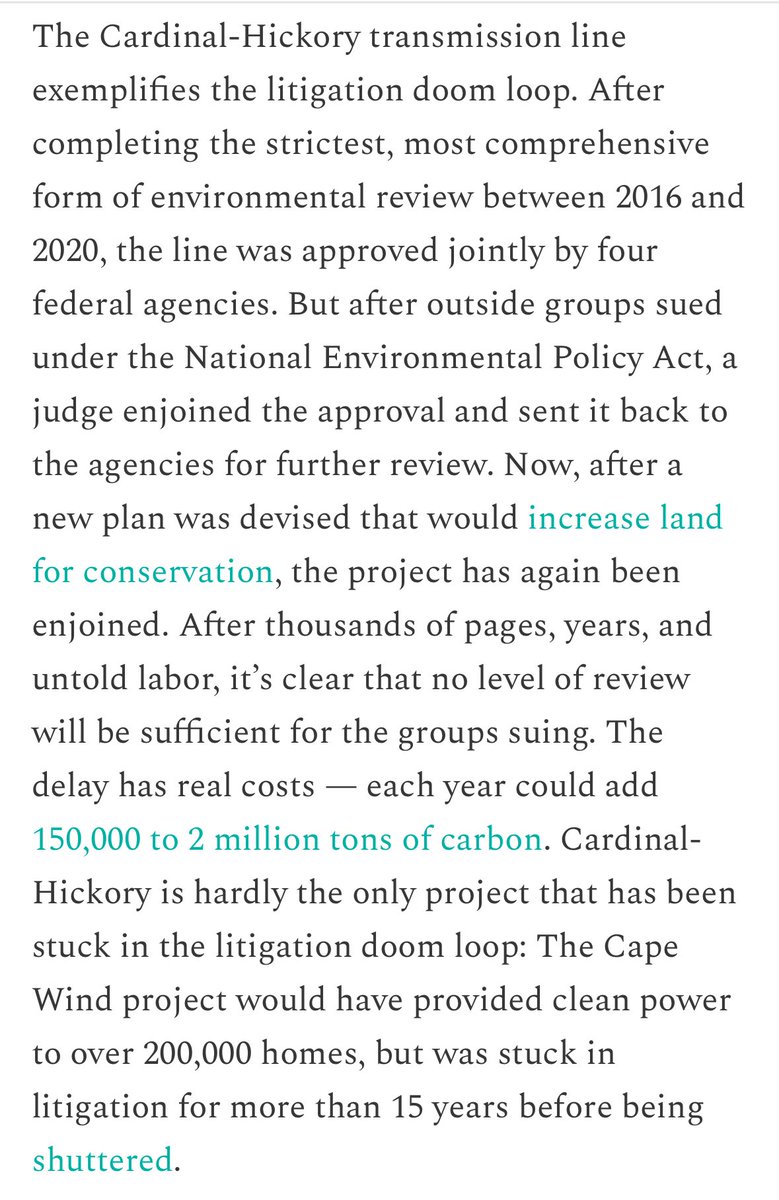The “litigation doom loop” is a huge problem for clean energy deployment.
Solar projects that receive the strictest level of NEPA environmental review have the highest litigation rate:
64%
By contrast, fossil fuel projects only have a 32% litigation rate.
Solar projects that receive the strictest level of NEPA environmental review have the highest litigation rate:
64%
By contrast, fossil fuel projects only have a 32% litigation rate.

.@ArnabDatta321 and @EnergyLawProf have an important piece in @mattyglesias’s Slow Boring today looking at how clean energy projects can get stuck in an indefinite cycle of environmental review, judicial injunction, and then remand for more review.
slowboring.com/p/we-must-end-…

slowboring.com/p/we-must-end-…

@ArnabDatta321 @EnergyLawProf @mattyglesias It's so perverse that the strictest level of environmental review disproportionately slows down clean energy projects.
From 2012-2018:
60% of all environmental impact statements for energy projects were for transmission/solar/wind/hydro/etc
Only 24% were for fossil fuels.
From 2012-2018:
60% of all environmental impact statements for energy projects were for transmission/solar/wind/hydro/etc
Only 24% were for fossil fuels.

@ArnabDatta321 @EnergyLawProf @mattyglesias And these numbers look even worse when you remember that we weren't building much clean energy infrastructure between 2012 and 2018!
We can't build the solar, wind, nuclear, geothermal, etc we need to reach our decarbonization goals without permitting reform.
We can't build the solar, wind, nuclear, geothermal, etc we need to reach our decarbonization goals without permitting reform.

@ArnabDatta321 @EnergyLawProf @mattyglesias One way to end the litigation doom loop:
Set a four-year time limit on judicial injunctions:
ifp.org/a-grand-bargai…
Set a four-year time limit on judicial injunctions:
ifp.org/a-grand-bargai…
@ArnabDatta321 @EnergyLawProf @mattyglesias Be sure to check out the full piece here:
slowboring.com/p/we-must-end-…
slowboring.com/p/we-must-end-…
• • •
Missing some Tweet in this thread? You can try to
force a refresh






















